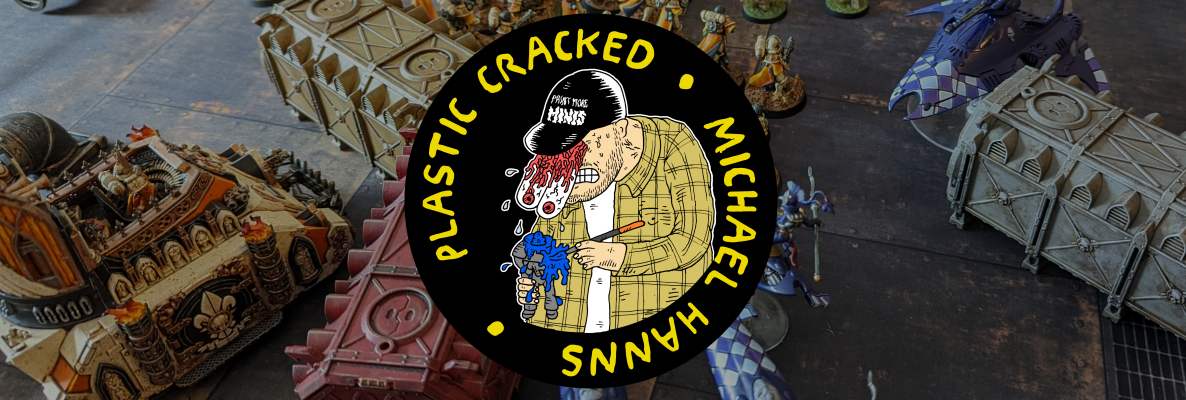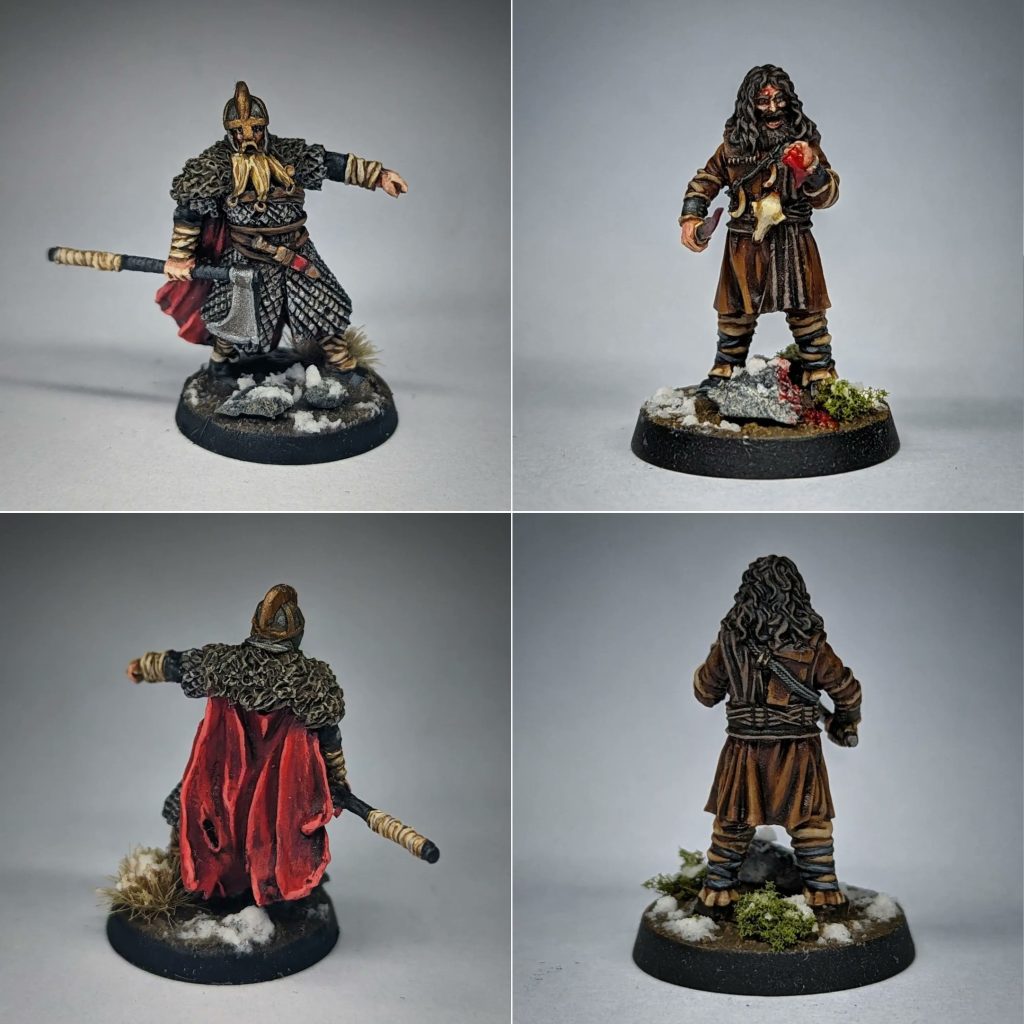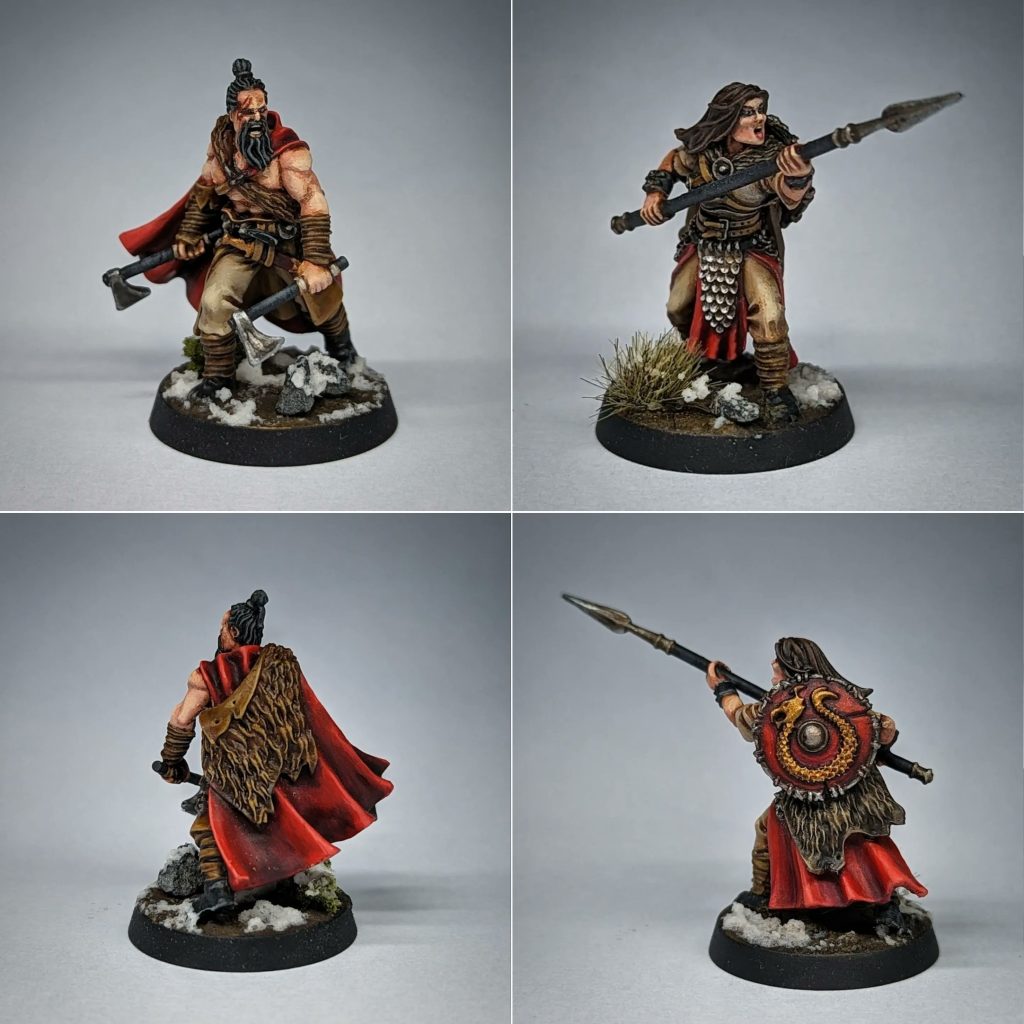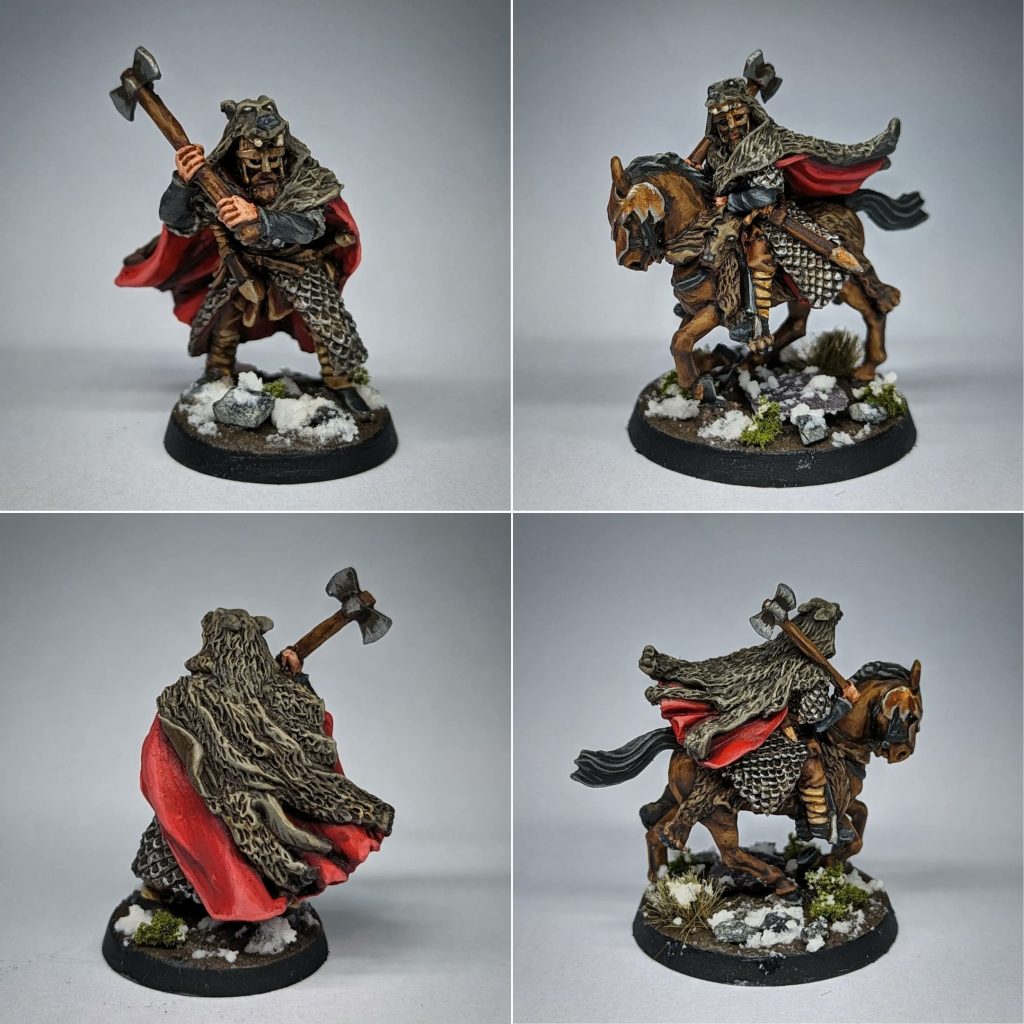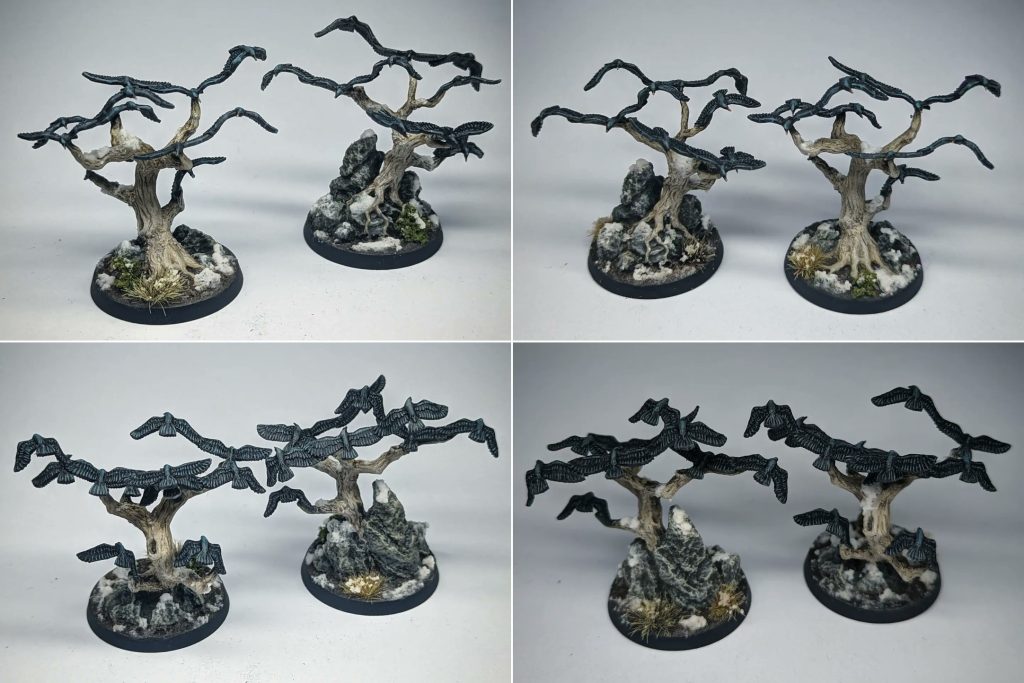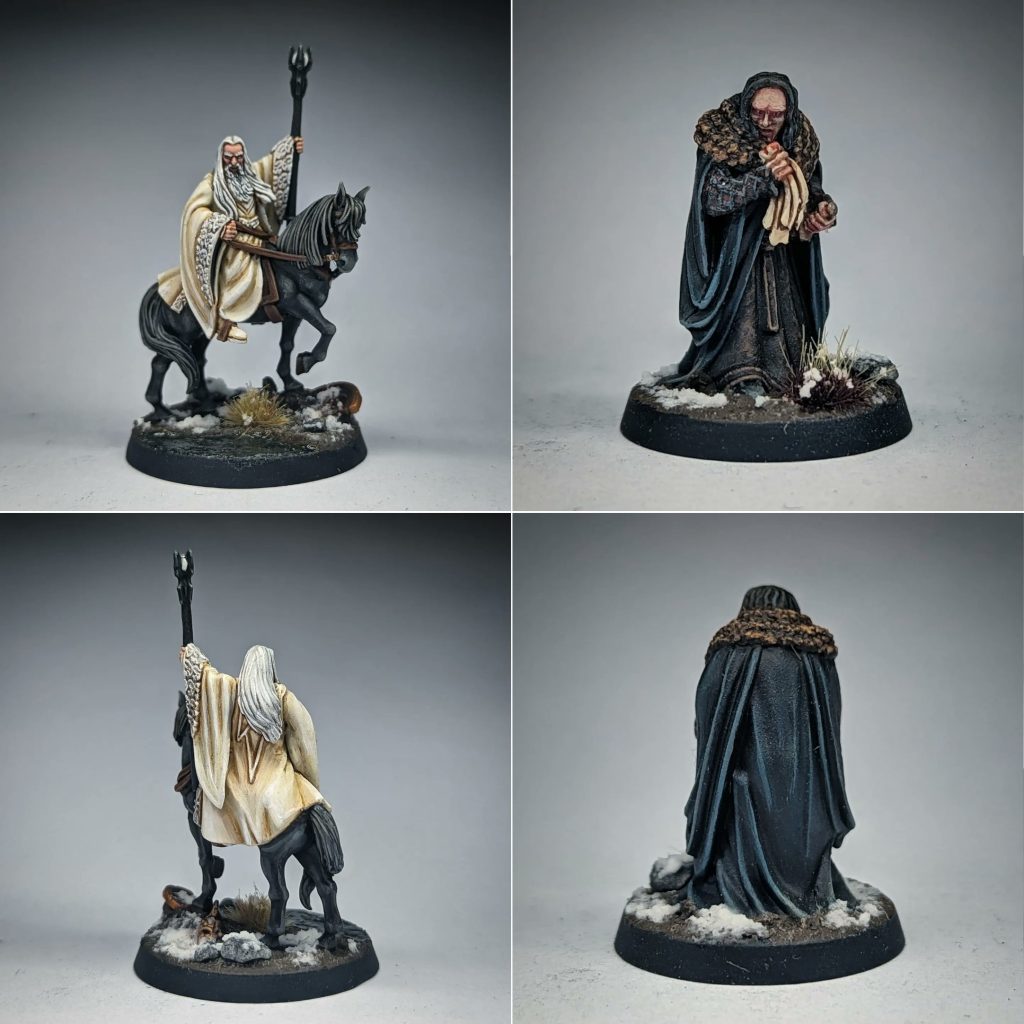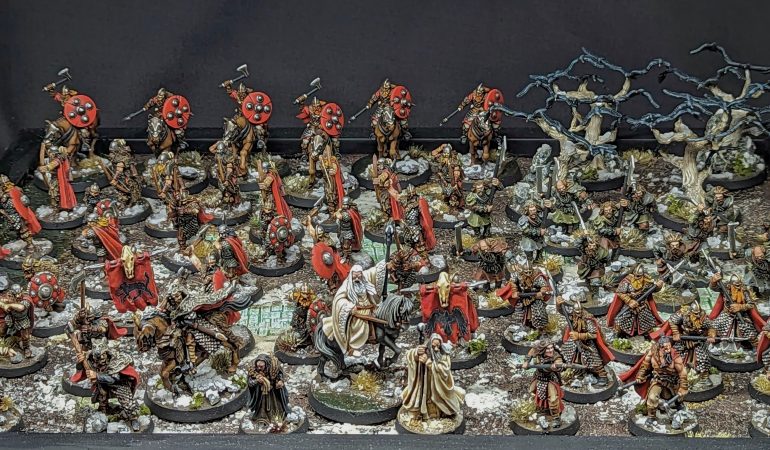
At the conclusion of the second post about my Rohan army, I made some vague comments about starting work on a Two Towers narrative campaign after I finished up my Uglúk’s Scouts army. Well, they’re finished, so I guess it’s time to embark on the next leg of the journey.
When my friend Jack and I first decided to bite off this monumental task, we started with a conversation about how we planned to divide up the workload. I was happy to deal with whatever was required of Rohan given that – at the time we discussed this – I was just finishing up my Riders of Théoden army anyway. There couldn’t be that much more work to do there, right1? Aside from some Rohirrim reinforcements, I was happy to take on the additional Ents – I already had a small Fangorn army which could do with a little more attention. Finally, I also really wanted to do the Haradrim. I mean, who wouldn’t want to paint a Mûmak, right? This left the Lothlorien, Osgilliath Rangers and the bulk of the forces of Isengard to Jack – all three of which were armies that he was already collecting (or planned to), although I can’t imagine he’d had ambitions of fielding over 100 Fighting Uruk Hai at once prior to this undertaking. Everything here felt pretty organic, with each project that we’d agreed to take on being an army we were already collecting (or had ambitions to). All except one sizeable complication that had managed to slip both of our minds: Dunland.
It’s kind of easy to forget about Dunland. They’re a fairly niche range of minis, representing a faction that all things considered has a pretty small2 presence in Peter Jackson’s The Lord of the Rings trilogy. And yet, Dunland features in no less than four (fairly meaty) battle scenarios in War in Rohan – three of which make up the opening act of the campaign as the Westfold burns and Prince Theodred is slain at the Battle of the Fords of Isen. At first, I considered maybe these scenarios are maybe kinda sorta skippable. They don’t account for a lot of of screen time in the movies. The longer I ruminated on it however, the more that it seemed an integral part of the story – and one especially well suited to a tabletop wargame.
In truth, I was really excited to start this army. I don’t really know why. By all accounts, I shouldn’t have been. While the miniatures themselves are their own thing and there is – mercifully – very little in the way of Cavalry in this army – Dunland are pretty much just Evil Rohan, right?
Well, kind of. They’re both men with round shields and cloaks, wearing leather boots and scale mail armour. Swap out some green paints for some reds and by and large the painting process remains exactly the same. Still, there was something undeniably appealing about the project, despite coming so soon after painting my Rohan. I suppose it’s a bit like doing a second Space Marine legion for the Horus Heresy – the models are more or less the same sort of idea, but the colours and the specifics change. Where Rohan are very Anglo-Saxon inspired, the Dunlending Warriors slant a little more towards Vikings in their overall aesthetic. Where Rohan are clad in naturalistic, leafy greens, the men of Dunland wrap themselves in blood red cloaks. There’s a strange kind of appeal in painting something so similar, yet distinct.
The fact there are so few fantasy elements to either the Rohan or Dunlending armies was another very interesting factor in painting these miniatures. Between the restrained sculpts, the Anglo-Saxon/Viking influences in the designs and the vast amount of pewter miniatures involved in these armies, for a moment I felt like I understood what it must be like to be a Historical wargamer. And honestly? I didn’t hate it. If I had any interest in military history that wasn’t completely fictionalised, I could absolutely see the appeal. I must be getting old.
As for colour schemes, the army is typically depicted (at least in Games Workshops photography) as wearing red – and I really enjoy painting red. I always seem to get good result from painting a saturated red, something I mostly attribute to the complimentary qualities of Vallejo Heavy Red and Vallejo Bloody Red. The former is a nice rich mid tone red with excellent coverage, while the latter is a beautifully saturated bright red that goes on fairly transparently, making it very easy to get nice transitions with layering. Bloody Red does end up quite glossy, but you can knock that back with a bit of matte varnish and the whole miniature really seems to come together.
As far as the miniatures go, Dunland is something of a quality over quantity range. The core GW product line is made up of one named hero (Thryden Wolfsbane), the Wild Men of Dunland (with 4 unique sculpts) and the Dunlending Warriors (with 2 axe/Shield sculpts, 2 Double Handed Axe sculpts and 2 Archer sculpts) which come packaged with a Banner and a Captain. All of this is pewter, there is no plastic in this range3. The standard Games Workshop range is supplemented with a few very nice ForgeWorld kits released in 2020 to coincide with the War in Rohan supplement. These include a trio of named Heroes, an elite infantry unit (3 unique sculpts), a cavalry unit (2 unique sculpts) and a flock of Crebain (2 unique sculpts). It’s limited, but I also kind of love that about this sub-faction; there’s just no bloat whatsoever. You’ve got heroes, light infantry, medium/heavy infantry, elite infantry, cavalry and a skirmishing/harassing/swarm unit. There’s nothing here that doesn’t need to be, which is kind of cool. Visually, each element of the army is unique and distinct – although I don’t imagine there’s a ton of variation in different Dunland armies.
The assembly process was fairly reasonable despite being made up of exclusively pewter and resin. Working with pewter obviously has it’s challenges, but there was a lot less cleanup required on these minis than there were on my plastic Rohirrim. I only have one major criticism to make against these miniatures and it – surprisingly – has to do with the Dunlending Huscarls from ForgeWorld. Lovely miniatures with nice chunky detail, but they are fundamentally faulty miniatures. After straightening out their halberd weapons with a bit of boiling water, I discovered that the amount of shaft between their two hands was too long and their hands were too far apart to fit into their sockets on the main model. I had to fix this manually, by snipping one hand off at the spear shaft and trimming about a millimetre off of it before joining them together again. To my shock and horror, this was not an issue with one outlier miniature either – I had this same issue on all six Huscarls. This was honestly quite shocking and kind of a pain to fix, requiring very careful trial and error as I continued to slowly trim away the excess spear shaft between the two hands and dry fit the pieces against the model. How this kit made it to production with this issue in this day and age is quite the head scratcher.
Another – far more minor – issue I had with assembly was that, for whatever reason, the little slotta tabs on the bottoms of my metal Dunlending Warrior models were too wide to actually fit between the 25mm slotta bases. I tried filing down the sides, but this was just way too time consuming for 24 miniatures – and snipping them off the tabs means a far smaller contact point to glue the models to the bases. On a lot of these models, I ended up resorting to snipping the lower half of the tabs off with a pair of old clippers and then gluing the tabs over the bases, concealing the millimetre or two of exposed tab with a bit of slate and texture paint. I don’t know if these miniatures were always like this or if it’s a byproduct of Games Workshop’s modern pewter casting process or what, but it was kind of annoying. Not the end of the world, but worth mentioning as it’s an issue I’d not come up against until now despite working with my fair share of pewter minis in the past few years.
With assembly out of the way, it was time to start painting. While the process I used on these miniatures has a ton in common with how I painted my Rohan, I did make a couple of tweaks to the process and I have a few additional comments to add.
The first miniatures that I painted from this set were the Wild Men of Dunland. As there were three repetitions of each sculpt in the group of 12, I picked out three colours for their rags and alternated what area on the model that I used each colour for. These were Heavy Bluegrey, Heavy Grey (more of an olive drab) and Dark Fleshtone. On one miniature I might paint the trousers Heavy Grey, the torso/sleeves in Heavy Bluegrey and the sash in Dark Fleshtone, for example, then I’d switch the order around for the two duplicates. When all the basecoats were down, I then did something I’ve never done before on Middle-earth miniature before – I coated the miniatures in Streaking Grime and removed the excess on the surfaces with some white spirit on a cotton bud. Once the shade had dried, I went in and highlighted the miniatures with the base colour before painting the faces and bases. I’m pretty happy with how this technique turned out on these models – it creates a nice, grimy, low contrast look to the miniatures and was super quick to knock out.
Pleased with the speed of the Streaking Grime technique on the Wildmen, I decided to use this method instead of Agrax Earthshade to shade the rest of the Dunlending Warriors. I liked this idea of using subtly different techniques to further differentiate them from the Rohirrim. Once again, I think it worked out reasonably well – although the effect is much less pronounced after layering and highlighting the reds. Other than my use of Streaking Grime and the aforementioned reds on cloaks and shields, the rest of the painting process on my Dunlending army was pretty much the same as it was with my Rohan.
One thing that I was very surprised to discover however was how much more I enjoyed painting the metal Dunlending miniatures over the resin ones. While the resin casts are lovely and crisp with some excellent detail, I found that some of the details were a little difficult to paint. Areas like the leather wraps on the wrists were nice and simple to pick out on the metal minis but felt a bit complicated to deal with on the resin models due to the increased level of detail. I got there in the end, but after so looking forward to painting the modern miniatures, I was surprised by how much more I enjoyed painting the older ones.
The last thing I’ll mention about painting the Dunlendings is the banners. I knew I was going to have two of these in the army – mostly because a box of 12 Dunlending Warriors comes bundled with a banner and a Chieftain whether you want another or not – so I tried to vary things up a little bit. The first banner I that I painted was just my best attempt at copying the freehand wolf from the paint job on the Games Workshop webstore. For the second, I took to Google images trying to find examples of Dunlending heraldry – where I found some suggestion that a crow (or more specifically a Crebain) would make for good Dunlending symbolism. I was happy with how the wolf turned out, but I must admit to being really quite pleased with the Crebain banner. If I only bring the one in a game, that’ll be the one I take with me.
One Dunland unit that has no equal in the Rohan army list are the flocks of Crebain. I was really excited to paint these, thinking they’d make a quick and easy break from painting men. Oh god, how wrong I was.
Let’s start with the easy bit – the trees. I painted these with a base coat of Pallid Wych Flesh, followed by a wash of Streaking Grime and – after cleaning it up with white spirits – gave it another drybrush of Pallid Wych Flesh followed by a drybrush of White. So far so good. Next, I basecoated all of the birds in Charcoal and got to drybrushing those as well.
To highlight the Crebain themselves, I used a small round tipped drybrush and gently drybrushed the birds with Mechanicus Standard Grey with a tiny bit of Turquoise mixed in, followed by Heavy Bluegrey with a little Turquoise mixed in. This ended up reading a bit too grey for my tastes and didn’t quite pop like I wanted it to, so I washed them with Nuln Oil and repeated the process. Again, not enough pop. I scratched my head and I checked the ForgeWorld webstore – only to discover the obvious. The Crebain on the webstore had each feather highlighted individually. This, of course, resulted in a much cleaner and poppy highlight than drybrushing would with a nice clean separation between the feathers. I hummed and hawed a bit over whether I wanted to commit to this, so I experimented on a single bird. To my equal delight and horror, it looked a lot better. Sadly, there was nothing else for it – I was going to make 20004 tiny little highlights. This was a long and boring process, but I do believe that the results speak for themselves.
I will admit that I did not bother repeating this process on the undersides of the birds, however – those remain simply drybrushed and washed. It’s quite a jarring difference if you look at them, but you really need to lift the minis up off of the table to actually see it, otherwise it just looks like intentional shadows. It makes for quite a cool effect on the tabletop, actually.
At this point, I was just about ready to call the army done. Not only had I painted (a little more than) enough Wildmen, Warriors, Huscarls and Horsemen for the War in Rohan scenarios, but I’d also added an extra banner and 4 bases of Crebain to really flesh out the army for Matched Play. There was one last pair of miniatures that I really wanted to do while I was in the area, however.
Around about the time of it’s release, my lovely wife purchased for me the excellent Saruman and Grima Wormtongue plastic kit for my Christmas. I’d planned to add these to the Isengard army that I’d eventually make using the Uruk Hai Scouts that I’d painted for narrative games. That army ended up getting put on the backburner – the Lurtz’ Scouts and Uglúk’s Scouts Legendary Legions ended up making Scouts far more appealing, but there wasn’t a place for the White Wizard in either. Poor Saruman fell further and further down my backlog.
While Saruman nor Wormtongue aren’t in the Army of Dunland Legendary Legion either, I now have enough Isengard miniatures between both of these armies that I figure it’s time to show the OG White Wizard a bit of love.
And I’m so glad I did – what a joy to paint this kit was! Having painted an original metal Saruman before and – by this point – my fair share of 28mm horses, I felt very much in my comfort zone painting this model. Grima, however, was a little more uncharted territory. There were some very challenging fine lines to paint around the netting on his bracers, and I did my best to stipple a little texture onto his velvet robes as well. I did struggle with his face for a while, unable to pinpoint what I was doing wrong until eventually it hit me – I was trying to paint eyebrows on a face that doesn’t really have any. Once I figured that out and painted in his cleft forehead, the miniature really came together. Another long lived item on the backlog cleaned up.
And with that, I had finished my army of Dunland. We’re now one step closer to the dream of playing the Two Towers narrative campaign – and I have a new army for Matched Play to boot. I’m really happy with how these miniatures turned out and can’t wait to see how it plays on the table.
At this point, I’ve been consistently pumping out Middle-earth miniatures for four months straight without a break, so I might take a little break or change direction for a bit while I recharge my batteries. The next post might take a little while longer than usual, or it might just be a grab bag of miscellaneous projects. Who knows? We’ll just have to wait and see.
Until then, thanks for reading and happy wargaming!
1 Wrong, but more on that in a later post.
2 The word ‘Dunland’ is only ever spoken once in the trilogy (by Legolas). The word itself appears a mere three times total in the Two Towers script and never in dialogue. The Dunlendings themselves are not present at Helms Deep and only show show up in a couple of scenes during the Burning of the Westfold montage.
3 Nope, not even Thryden Wolfsbane’s horse!
4 This is a rough estimate based on counting the number of feathers per bird, multiplying it by the number of birds on a base and multiplying that by the number of bases.
